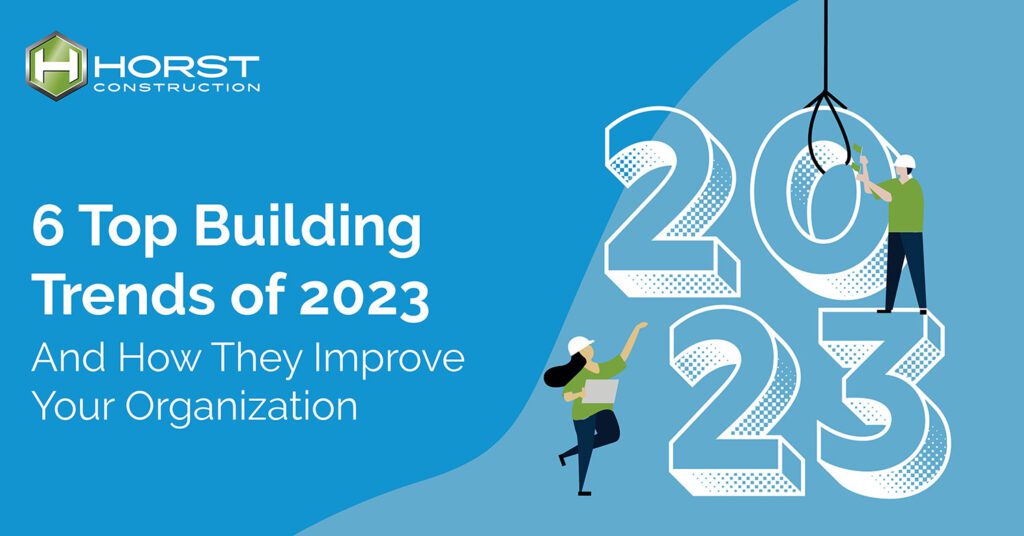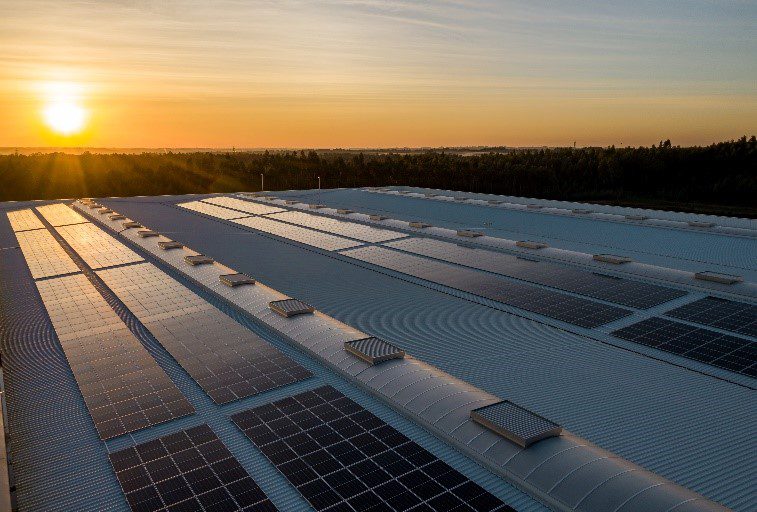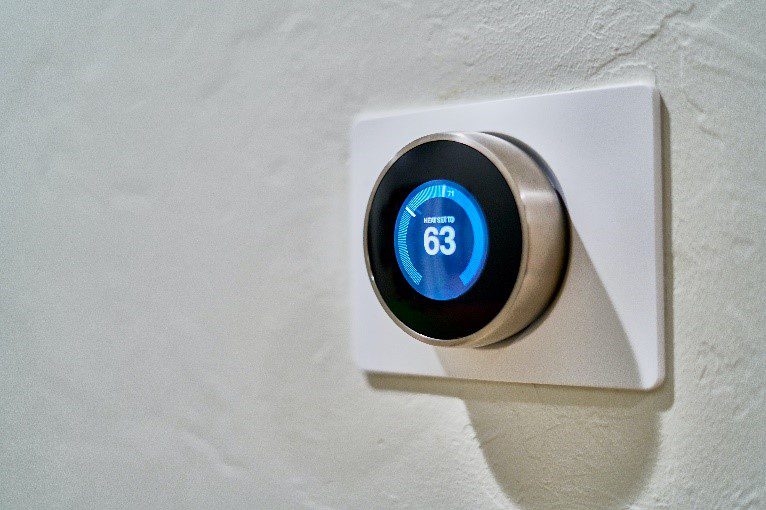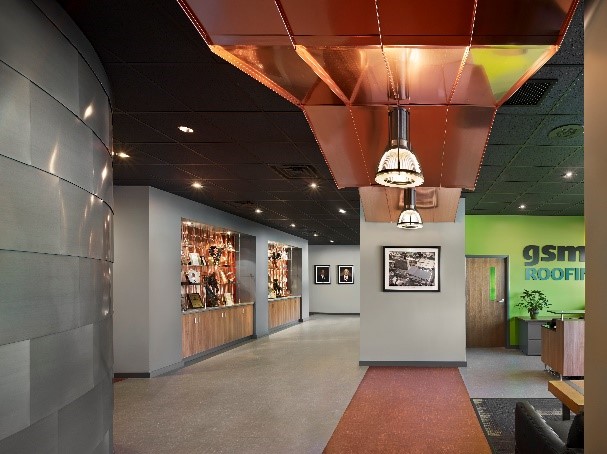The 6 Top Building Trends of 2023

Whether you’re renovating, building new, or just dreaming about updating your space, understanding the trends and shifts occurring in design and building can help keep your organization fresh and relevant.
Some building & design trends look great at first but quickly fall out of style. Other trends are longer lasting, embodying more significant shifts in how we operate in our buildings. The trick to embracing long-lasting changes is to identify what is going to improve the way your people interact with your space.
Here are six trends we expect to see in 2023 that will improve your organization.
- Renewable Energy
- Connectivity & Smart Devices
- Energy-Saving Devices, Appliances, and Finishes
- Creating Spaces for Connection, Comfort, & Well-Being
- Placemaking
- Getting Input From All Stakeholders
#1: Renewable Energy
 Energy is money — especially in the 2020s. From October 2021 to October 2022, electricity prices increased by 16.9% and gasoline costs increased by 18.8%, according to the US Bureau of Labor Statistics.
Energy is money — especially in the 2020s. From October 2021 to October 2022, electricity prices increased by 16.9% and gasoline costs increased by 18.8%, according to the US Bureau of Labor Statistics.
That’s why we expect to see more organizations shifting to renewable energy sources in 2023.
Organizations of all sizes can install their own means of producing renewable energy. And while these systems cost money to install upfront, they’ll pay for themselves over time with the free energy they produce. These systems usually continue to operate long after they’ve reached their payback, generating pure savings for an organization’s bottom line.
With energy prices on the rise, installing your own means of producing energy helps shield you from the seemingly ever-increasing energy costs. They also show your company’s commitment to sustainability, which is increasingly important for both consumers and employees.
A 2021 study conducted by global strategy and pricing consultancy Simon-Kucher & Partners found that 61% of Americans rated sustainability as an important purchase criterion, with much higher percentages for Millennials and Gen Z. As these younger generations transition into wealth-holding and decision-making roles, sustainable businesses are going to have a huge edge over the competition.
#2: Connectivity & Smart Devices
 Property management is a time- and resource-intensive endeavor, but technology is here to help you reduce your operations costs. With the rapid advancement of smart devices, organizations of all types can find ways to enhance their properties more efficiently.
Property management is a time- and resource-intensive endeavor, but technology is here to help you reduce your operations costs. With the rapid advancement of smart devices, organizations of all types can find ways to enhance their properties more efficiently.
Many of these start with indoor sensors, a system of devices that communicate where people are in your building throughout the day. They can help you schedule services like cleaning and maintenance around the building’s operations to minimize disruptions. You can also make data-driven decisions to optimize lighting, heating, and cooling.
Additionally, smart lighting, smart security systems, and smart thermostats can be controlled remotely, giving property managers the ability to adjust the building’s fixtures remotely and much more quickly.
Used effectively, these can help you reduce costs for utilities and resource management and are applicable to a wide variety of spaces across many different markets.
#3: Energy-Saving Devices, Appliances, and Finishes
Another cost- and energy-saving trend we expect to see continued growth from is the installation of energy-efficient devices, appliances, and finishes. From heat-reflecting roofs to ultra-efficient windows, to something as simple as LED lighting, these changes can save your organization a significant amount on operating costs.
Whether you’re building new, adding on, or renovating, consider how you can make your building more efficient. It’s often much easier and more cost-effective to work these updates into a larger project than to make them independently.
These can either complement renewable energy sources or work independently. Either way, you’ll be cutting back on costly energy expenses.
#4: Creating Spaces for Connection, Comfort, & Well-Being
You’d be hard-pressed to find someone who isn’t relieved most COVID-19 restrictions are rolling back. From social distancing to quarantining, many people limited their interactions with other people. Now, it’s time to reconnect, and we expect to see design and building trends that support this.
What this looks like will vary dramatically depending on your type of organization and business model. For organizations whose workforce transitioned to remote work, offices and workspaces can create versatile spaces that combine digital and physical infrastructure to support a hybrid environment.
Buildings of all types will likely embrace flexible environments that give people the ability to change interior arrangements to suit their needs, whether that be gathering with a large team, small group, or independently. We also expect to see a combination of casual and formal spaces that give people options as to where to spend time depending on their tasks.
This flexible environment can certainly benefit from thoughtful smart devices, which can help property management make adjustments depending on how many people are in the building and where they’re located.
#5 Placemaking
 Ever notice how you can walk into a popular chain restaurant and know exactly where you are, even if you didn’t see the sign? That’s the power of placemaking.
Ever notice how you can walk into a popular chain restaurant and know exactly where you are, even if you didn’t see the sign? That’s the power of placemaking.
Placemaking is when an organization uses building and interior design to create spaces that are unique to an organization’s identity. These are areas people want to spend their time in. Whether they’re there to live, work, worship, shop, learn, or do something else, a pleasant environment enhances their experience.
While placemaking is not a new concept, our desire to reconnect with people and spend time out of the home post-COVID-19 has renewed its importance. Coming out of these restrictions, we have a renewed respect for the environments in which we spend our time, and organizations are realizing that the right space can give them an edge.
In 2023, we expect to see this concept spread into organizations of all kinds. The environment in which people work can impact overall satisfaction and productivity. Intentional design can help draw in customers, residents, members, and employees.
#6 Getting Input From All Stakeholders
When creating a new space or renovating an existing one, it’s often worth the time to get input from various stakeholders. Doing so will give you insight into the needs of the people who will be using the space on a daily basis.
Identify the key stakeholders and representatives from the different groups or departments in your organization. Ask them specific questions about what they need from the new space. Integrate their feedback where possible into the larger plan.
It’s important that this environment of collaboration and teamwork continues into the construction process. One way to ensure that happens is by choosing the right design-build construction company.
Learn more about Horst Construction’s approach to design build here.
Posted November 28, 2022

